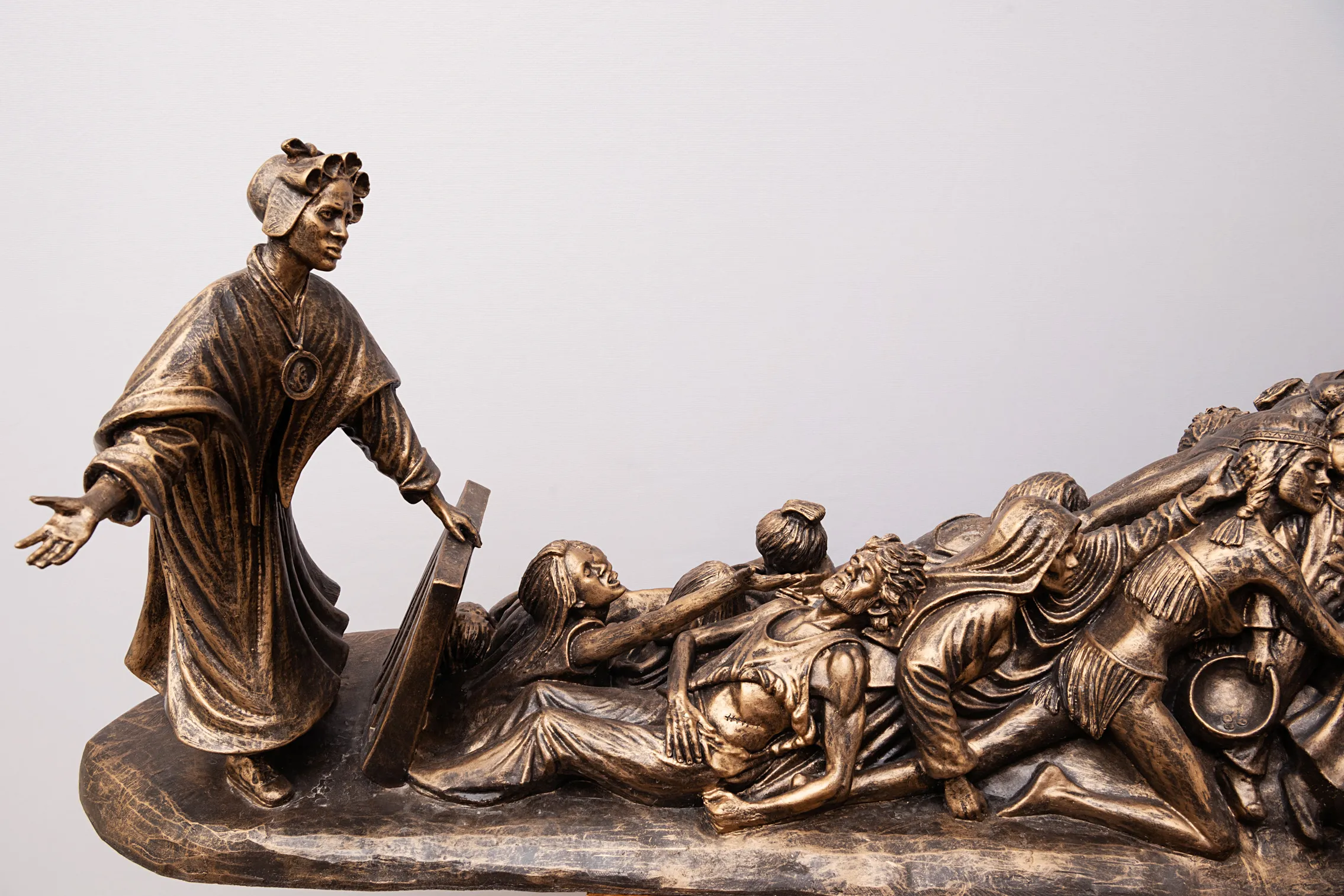Saint Josephine Bakhita sculpture to be installed in St. Peter’s Square.
Vatican City, Feb 3, 2022 / 10:15 am (CNA).
A statue of Saint Josephine Bakhita, the patron of human trafficking victims, will be placed in St. Peter’s Square at the Vatican.
The bronze sculpture, a piece by Catholic artist Timothy P. Schmalz, is dedicated to trafficking victims and to all women, especially the religious sisters who work to free women from modern day slavery.
The artwork depicts the saint, herself once a slave, freeing a mass of people from underground. It will arrive at the Vatican ahead of the International Day of Prayer and Awareness Against Human Trafficking on February 8.
February 8 was chosen for the day of prayer because it is the feast day of Saint Josephine Bakhita, who was born in Sudan in 1869. She was kidnapped at the age of seven and sold into slavery by Arab slave traders. During her time as a slave, she was beaten, tortured, and scarred.
Bakhita discovered Christ and the Church in her early 20s, and after she was freed from slavery, was baptized into the Catholic faith. She also joined the Canossian Sisters in Italy.

Schmalz created his sculpture of the saint in 2019. He has named it: “Let the Oppressed Go Free.”
The Canadian artist is also the creator of another sculpture in St. Peter’s Square, “Angels Unawares,” which depicts migrants throughout history crammed on a boat together with the holy family of Jesus, Mary, and Joseph.
The 20-foot-tall bronze statue was brought to the Vatican by Pope Francis in 2019.
Schmalz is also known for his “Homeless Jesus” sculptures, one of which was created for Vatican City in 2016.
CNA spoke with Schmalz in Rome in 2019. The interview can be read here.
The artwork of Saint Josephine Bakhita will be placed in St. Peter’s Square ahead of Pope Francis’ address and recitation of the Angelus prayer on Sunday, February 6.
The eighth International Day of Prayer and Awareness against Human Trafficking and Bakhita’s feast day will be marked with an online prayer marathon, which will move across different time zones, beginning in Oceania, Asia, and the Middle East and moving across the globe before finishing in North America.
Members of religious institutes, trafficking survivors, activists, volunteers, economists, and entrepreneurs will participate in the prayer marathon, which was organized by Talitha Kum, an international anti-trafficking network of Catholic women religious, along with other Catholic groups. The Vatican’s migrants and refugees office is also a partner in the February 6 and 8 events.
This year’s theme is “The power of care: Women, economy and human trafficking.”
The coordinator of the Talitha Kum initiative, Sister Gabriella Bottani, said “the pandemic has caused an increase in trafficking, has heightened the vulnerability of those most at risk and has led to a rise in gender inequality.”
“This day provides an opportunity to reflect on the causes of trafficking and to identify possible paths to a solution,” she said. “The violence caused by exploitation can be transformed with gestures of care and solidarity. We are all called to care about the dignity of each person.”
Pope Francis, who created the day of prayer and reflection for human trafficking victims in 2015, will also release a message on February 8.
While she was a slave, Bakhita was sold to the Italian Vice Consul, Callisto Legani, in 1883. He took her back with him to Italy, where she was given to a family to work as a nanny.
Later, the family left her with the Canossian Sisters, a women’s religious order, in Venice, while they traveled to Sudan for business.
Bakhita was cared for by the Canossian Sisters during the legal battle that ensued for her freedom from slavery. Eventually, an Italian court ruled that since slavery had been outlawed in Sudan prior to her birth, she was not legally a slave.
With her newfound freedom, Bakhita chose to receive the sacraments of baptism, confirmation, and first holy communion in 1890. Three years later she became a novice with the Canossian Daughters of Charity, taking the name Josephine Margaret “Fortunata” — a Latin translation of her Arabic name, Bakhita, which means “lucky.”
Bakhita was beatified in 1992 and canonized in 2000 by Saint Pope John Paul II. She is the first canonized saint from Sudan, and is the country’s patron saint.
Throughout his pontificate, Pope Francis has highlighted Bakhita’s example of holiness, and invoked the saint’s intercession for victims of trafficking.
“St. Bakhita, assist all those who are trapped in a state of slavery; Intercede with God on their behalf so that the chains of their captivity can be broken,” Pope Francis prayed in 2019.
Religion News
Mine Crypto. Earn $GOATS while it is free! Click Here!!